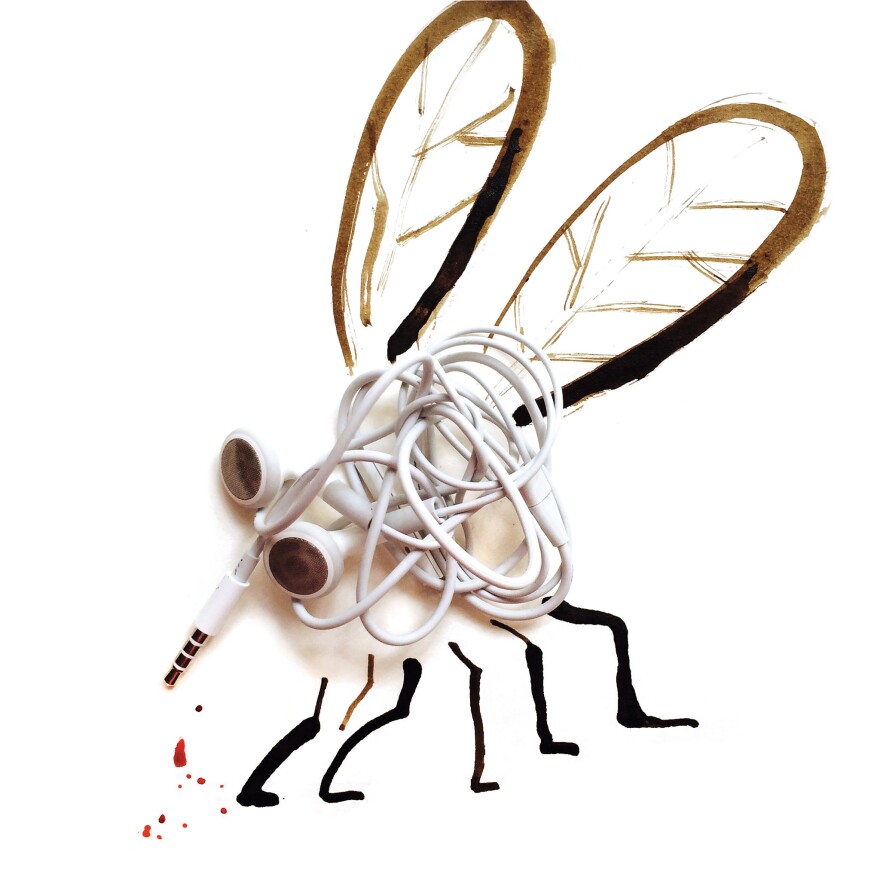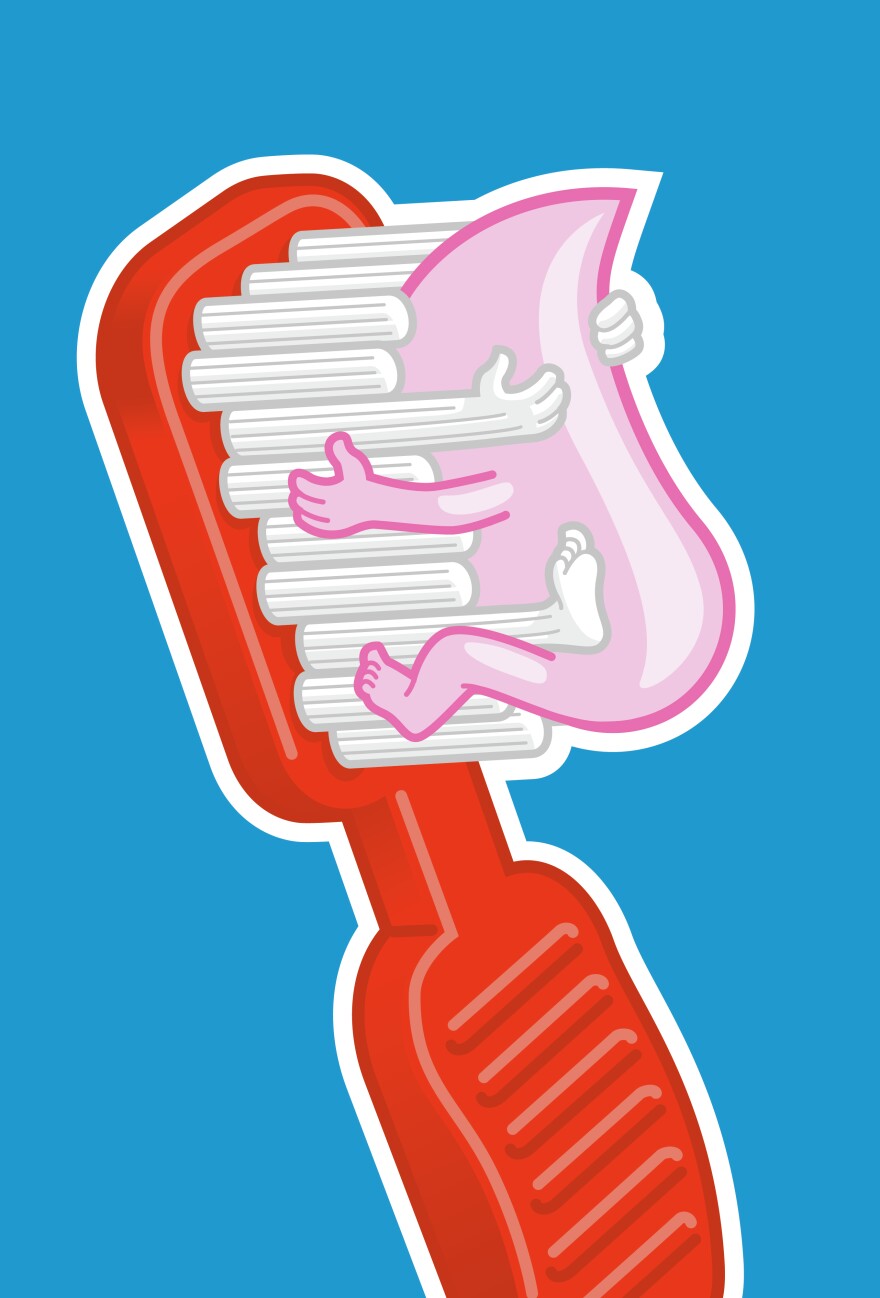A couple years ago, artist and illustrator Christoph Niemann felt like he needed to shake things up. "When you do any kind of creative job for a while, you become better ..." he says, "but I think you always become a little bit more predictable."
Niemann was plenty successful — his work appears in the New Yorker and he had a regular Sunday column in The New York Times Magazine. But he wanted to get out of his routine, so he decided to start a project called Sunday Sketching. Each week he took an object — say, a paperclip or a bunch of bananas — set that object on a sheet of paper and incorporated it into a sketch.
The bananas became the hindquarters of a horse. The paperclip became a beach chair. Half an avocado became a baseball glove at the end of an outstretched arm, with the pit landing in the center as the ball.
These drawings are whimsical and surprising, and Niemann has collected them along with more of his work in a new book called Sunday Sketching.
In one drawing, Niemann turns a tangled pair of Apple headphones into a mosquito. Inspiration for that one didn't come easily: "They're just like weird random white wires ... they looked like nothing," he tells NPR's Ari Shapiro.
Because Niemann usually knows where he's going with a drawing, he rarely laughs at his own visual jokes. But this sketch was different: "In this case it was like: Oh, wow, this actually looks like a mosquito," he recalls. "And that moment was fun."

Interview Highlights
On his wife's wedding shoe, which he turned into a shark, reminiscent of the famous Jaws poster
The way I've been doing these is: I always started with an object with absolutely no idea of what the outcome would be. And so, in retrospect, I hope the drawing makes sense and might even look somewhat inevitable. But the actual genesis of an image like that is: I stare at a shoe and hope that something happens.

On the unsexy part of the process
The bolt of inspiration is what the reader is supposed to feel when they look at the drawing. What creates that moment is 100 very boring, unsexy steps — you know, move the line a little further to the left; draw a dog instead of a cat; ... draw a chair instead of a table.
On how inspiration is not linear
I sometimes get from clients: Oh, can we just see sketches? We just want to follow your process. This implies you start at zero, and let's say an idea is 100. This implies that halfway through you would be at 50. In reality, you go from zero to minus 250 and then you go to 17,000 and then you go to R. And then you end at 100. If you would have shared it with people they would be utterly confused. I think it's very important to accept that this is not a linear process.

On learning to embrace creative discomfort
Often I find to get to an interesting point with the work you need friction. You need this moment of unease, of like, emotional dissatisfaction. By default this is a moment of discomfort. ...
When you [go for a] run, you know that you'll be sweating and you'll be exhausted. And once you accept that, there's other parts that you can enjoy. And what I found with these drawings is when you accept that when you give up control and you really throw yourself into the uncertainty there's actually another level of work that can be very satisfying.

On why he tries not to let social media dictate his work
The whole algorithm is really geared to a certain kind of quick: "Ha ha ha ha." So it's like an endless two-second joke. It's ... like a bag of Pringles which would taste great and ... after you've eaten two packs you just feel terrible. And then, of course, you have the vanity. You want people to like something. And I think it's so important to fight that impulse and to not let the number of likes and followers dictate where you're going.
On how people who see his visual puns may not appreciate the hours that went into creating them
You can't have people like the work that you create and also be in awe of how hard it is to do it. The one thing that I sometimes take somewhat offense to — and I know it's a figure of speech but — this idea of talent. When people say: Oh, you're so talented. I could never do that.
I always feel like: No. When you listen to a pianist playing a Beethoven sonata ... you would never say: Oh, I couldn't do that [because of talent. It's] because, well, you didn't sit down for 10,000 hours and practice. It's all about sitting down and the time you spend at your desk.
Copyright 2023 NPR. To see more, visit https://www.npr.org.




